
- Drake London had a breakout 2024 season: A new coaching staff and quarterback led London to go from a borderline fantasy starter to a must-start and potential top-10 option.
- Michael Penix Jr. builds momentum for next season: Penix zeroed in on London during his three starts, leading him to be a league winner. Ideally, Penix will continue his strong play and frequently target London.
- Subscribe to PFF+: Get access to player grades, PFF Premium Stats, fantasy football rankings, all of the PFF fantasy draft research tools and more!
Estimated Reading Time: 7 minutes

PFF’s Fantasy Football Player Profile series delivers the most in-depth fantasy football analysis available for the 2025 season.
Using PFF’s exclusive data, we evaluate player performance, competition for touches and how teammates and coaching staffs will impact each player’s fantasy football outlook.
Last updated: 7:15 a.m. Monday, May 12
Player Performance
London was the eighth pick in the 2022 NFL Draft and instantly became the Atlanta Falcons‘ top wide receiver. In his first year, he played only 78% of offensive snaps. The Falcons were a run-first offense under Arthur Smith, which led to a low routes per game rate. While he had six games of at least five catches and 120 yards as a rookie, he also had two games with more than 40 offensive snaps and one reception for single-digit yards.
London’s snap rate increased slightly in his second season, and the team was a little more pass-heavy. Unfortunately, that coincided with a notable drop in his target rate. His best games were even better than the previous season, including a 172-yard performance and a 125-yard performance, but he was also held under 50 receiving yards for half of his games and scored only two touchdowns. Despite being the top Falcons wide receiver, London was outside the top 40 at the position in fantasy points per game in both years.
The Falcons remained a run-first offense in 2024, but London’s snap rate increased to 90%, leading to another increase in routes per game. Atlanta returned to giving him an elite target rate, with his 27.2% clip ranking fourth among wide receivers last year. His quarterback play also improved, allowing him to finish 14th in fantasy points per game and fifth in total fantasy points among wide receivers.
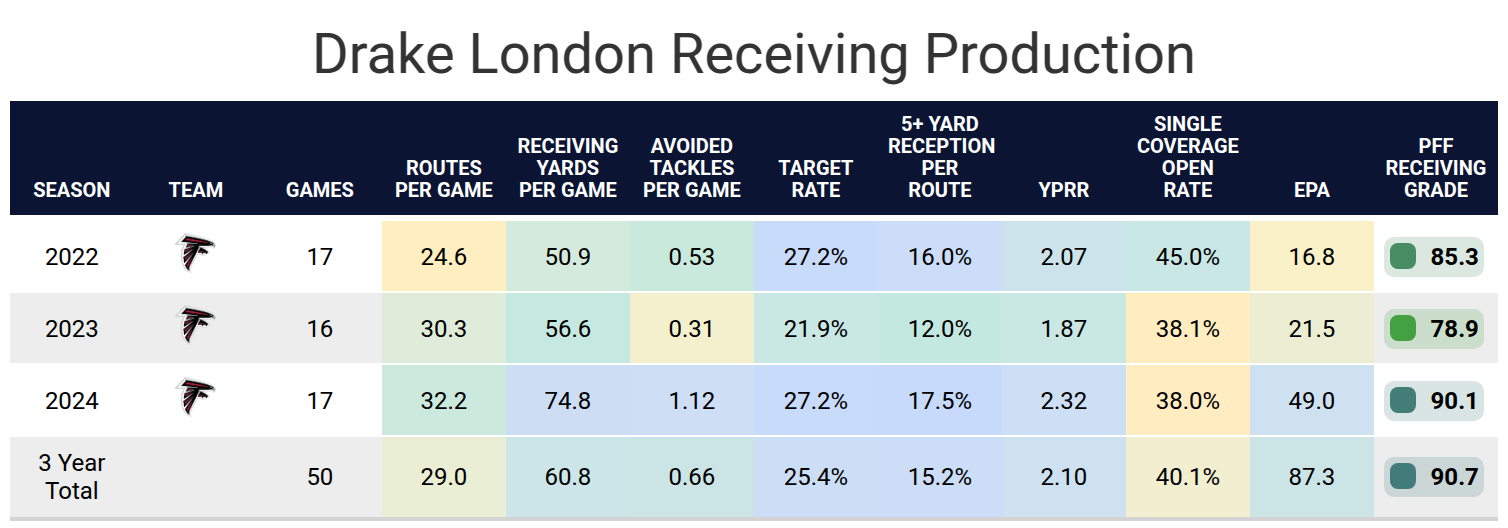
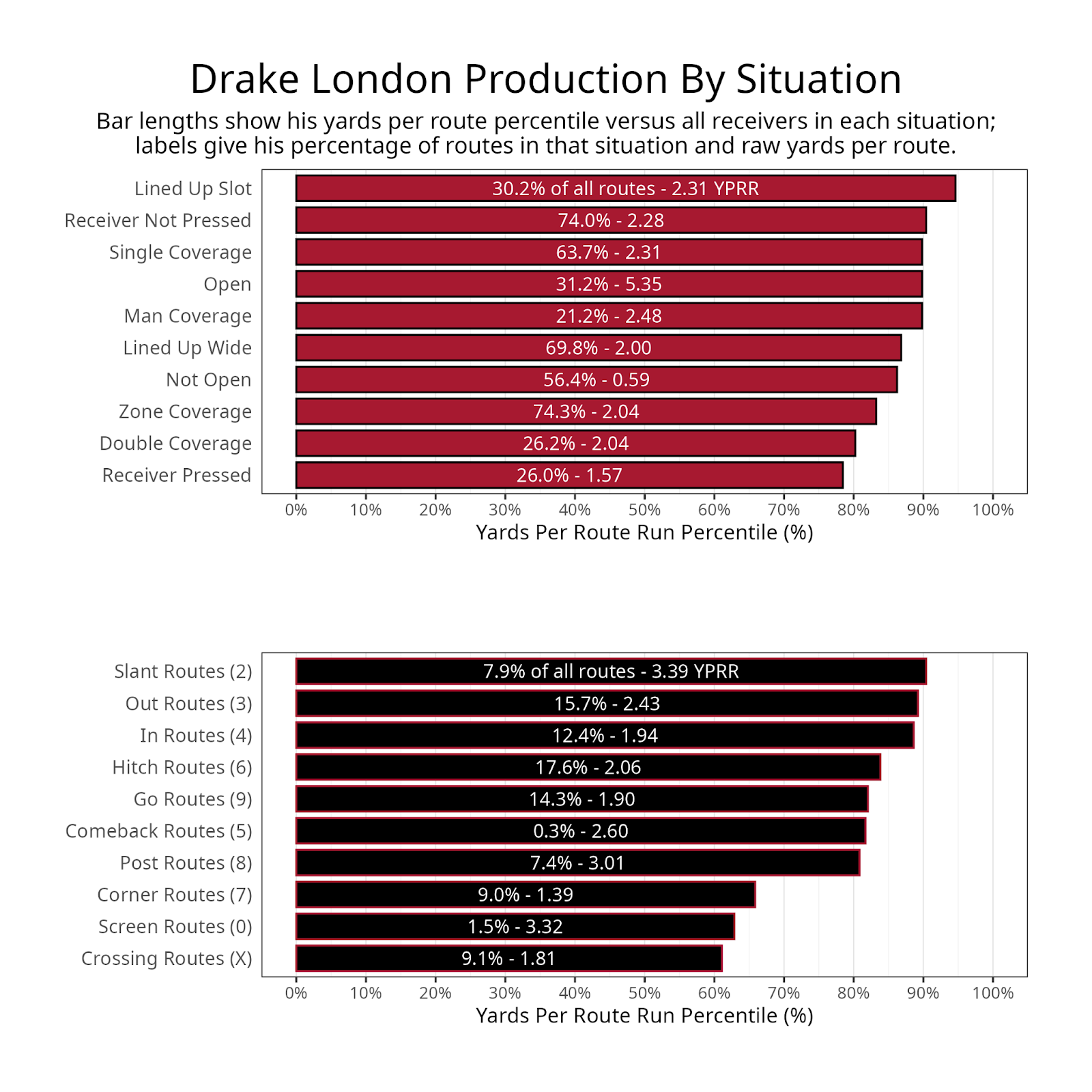
Projected Role
One of the many reasons for London’s improved statistics in 2024 was his increased play out of the slot. His slot rate increased from 18.6% in 2023 to 39.6% in 2024. Typically, slot receivers are smaller, quick wide receivers, whereas London is 6-foot-4 and 219 pounds and on the slower side for wide receivers. His 11.0-yard average depth of target was the second highest among receivers with at least 50 targets in the slot. He was targeted on a league-leading one-third of his routes, resulting in a league-leading 2.57 yards per route run out of the slot.
The Falcons didn’t change their wide receiver room, tight end room or backfield heading into 2025. That should allow London to remain among the league leaders in target rate. His stats from the slot may regress a bit, though.

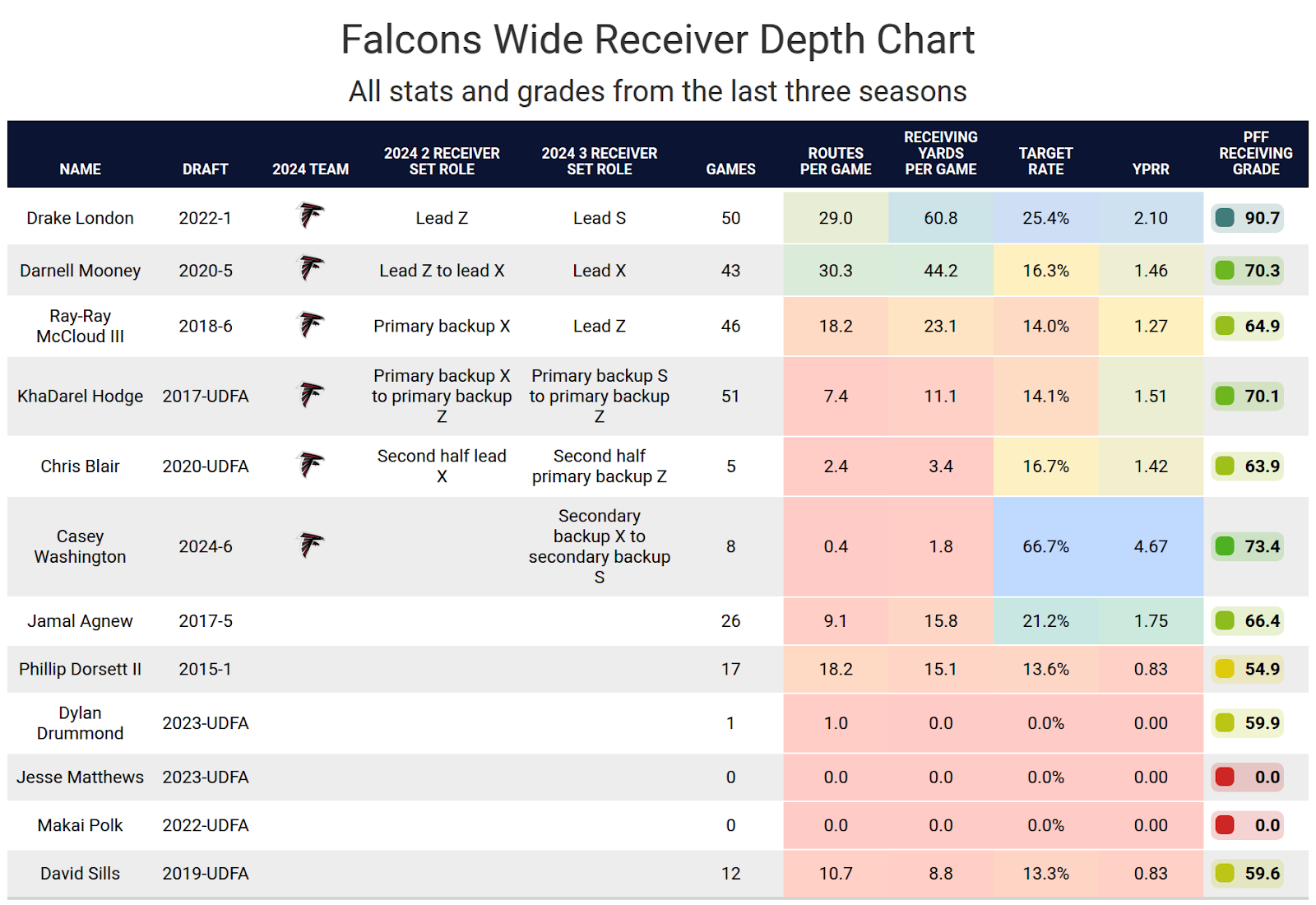
Impact of Teammates
Zac Robinson returns for his second season as the Falcons’ offensive coordinator. The unit resembled the Los Angeles Rams‘ offense in several ways, with the most notable exception being how often Atlanta ran the ball. Robinson inherited a team with Bijan Robinson, who is better than the recent Rams running backs, so, understandably, the Falcons ran the ball more often. Similarly, Atlanta didn’t have as much depth at wide receiver.
Quarterback play was a big reason for London’s struggles in his first two seasons. The Falcons had the second-lowest team PFF passing grade over the two seasons. While Kirk Cousins didn’t fully live up to expectations, Atlanta’s 78.3 PFF passing grade last season ranked 10th among teams. Cousins played well enough to remain a starter for most teams, but Atlanta had first-round rookie Michael Penix Jr. waiting in the wings, and he played very well on a small sample last season.
London shone even brighter in the last three weeks of the season when Penix was the starter. He was thrown to on 37% of his routes, including at least 34% in all three games. That led to 3.52 yards per route run. London averaged 15.1 fantasy points per game with Cousins as the starter and 23.1 fantasy points per game with Penix. That is roughly the difference between WR20 and WR2. We should never expect a target rate to consistently exceed 30%, so some regression is on the table. Regardless, London’s initial play with Penix is a promising sign for an even better season.
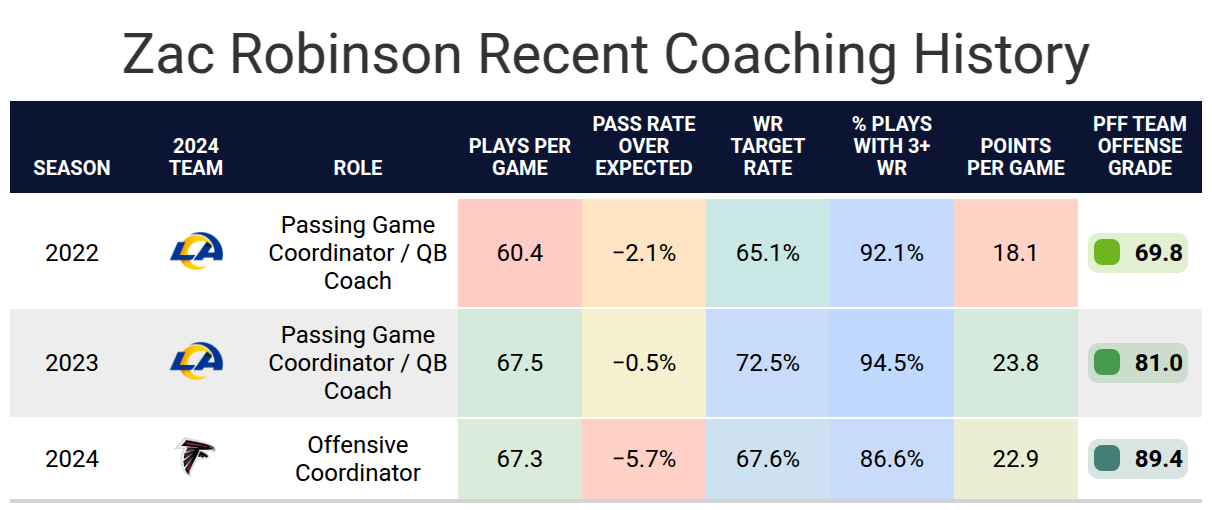
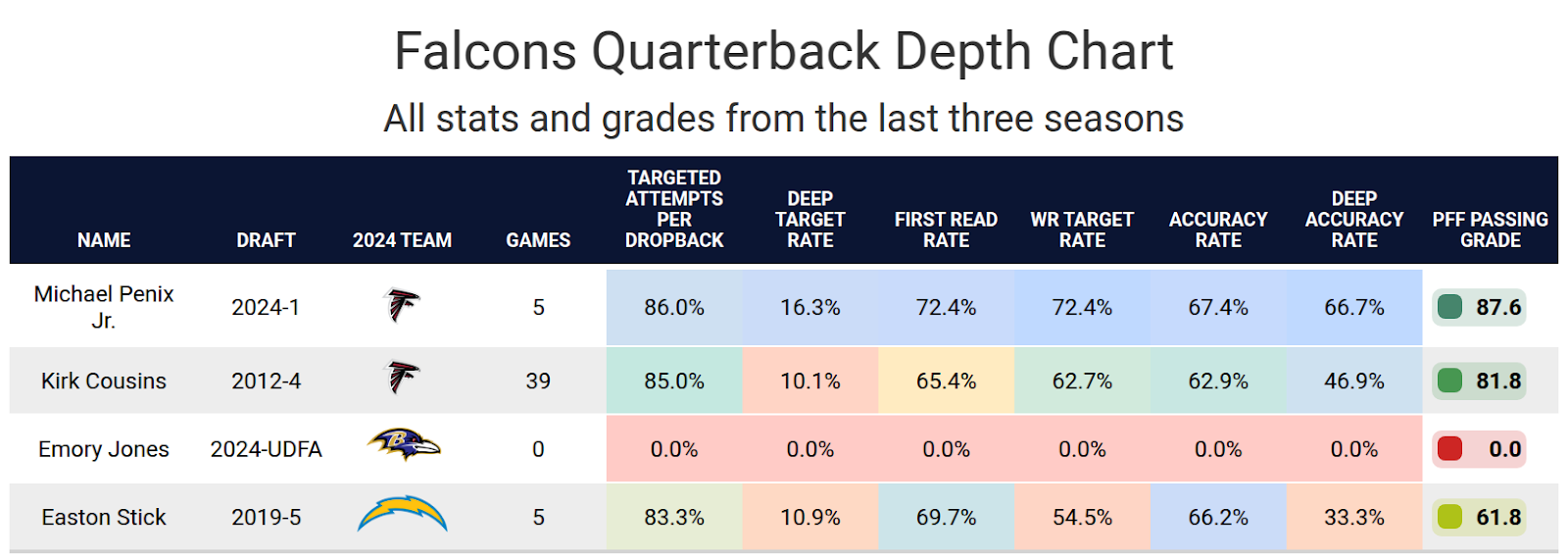
Bottom Line
London improved significantly in 2024, thanks to increased playing time, more opportunities out of the slot and improved quarterback play. We should expect more of the same in 2025, with the most significant variable being Michael Penix Jr.‘s ceiling in his first season as a starter.

Footnotes
- Statistics in tables and charts were chosen based on their ability to predict future fantasy performance on a per-game or per-opportunity basis or to describe the player relative to others at the same position.
- “Opportunities” are defined as passing dropbacks, rushing attempts and routes run as a receiver.
- Numbers are provided either by season or based on the past three years. For rookies, only college statistics are included. For non-rookies, only NFL statistics are considered, regardless of whether they played in college within the previous three years.
- As college competition is easier than NFL competition, most rookies are likely to see a decline from their historical numbers.
- Only FBS data is considered for college players and comparisons.
- Kneel-downs are removed from rushing data to provide cleaner quarterback rushing rate statistics.
- The table colors in this article range from blue (indicating good/high) to red (indicating bad/low).
- All percentiles and color codings compare the given player to others with a high sample of opportunities. Generally, the cutoff is one-third of the possible opportunities in the sample. If a player does not meet the threshold, they are still included in the comparison, though their results may appear better or worse than expected due to the smaller, less predictive sample size.
This news was originally published on this post .






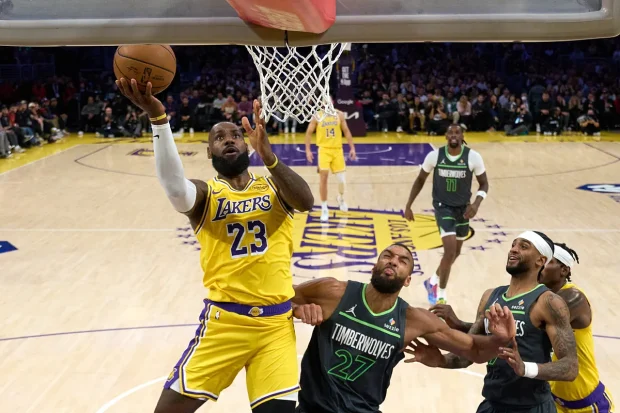

Be the first to leave a comment